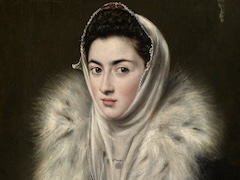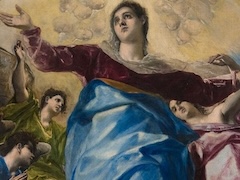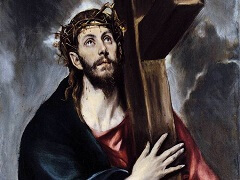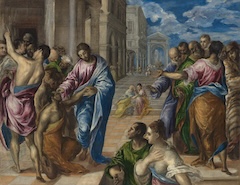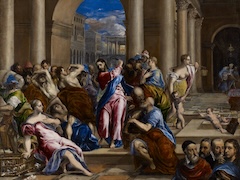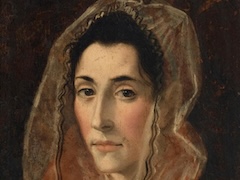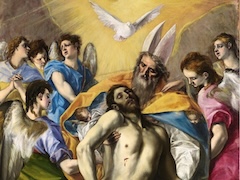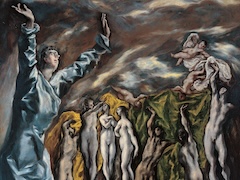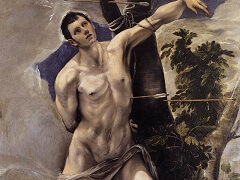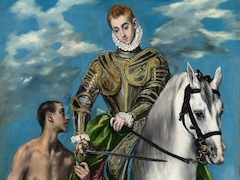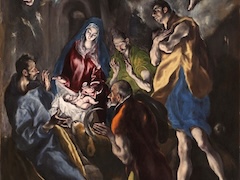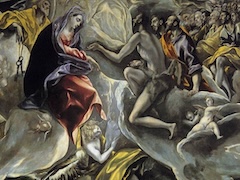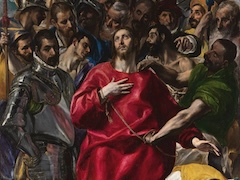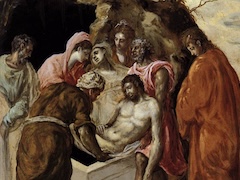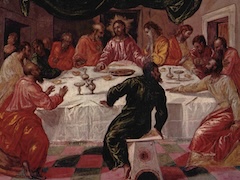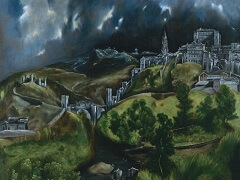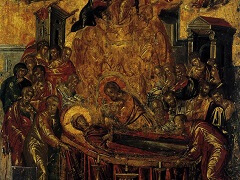The Last Supper, 1568 - by El Greco

The Last Supper exemplifies El Greco's Mannerist style. Mannerism, which emerged in the late Renaissance in Europe celebrated artistic imagination over more naturalistic depictions of the physical world; here, facial features are distorted, the figures are thin and elongated and the artist uses rich, vivid colour, or 'acid' colour as it is sometimes referred to.
Compared with The Last Supper by Leonardo da Vinci, which emphasizes proportion, balance, and ideal beauty, El Greco's The Last Supper favors compositional tension and instability rather than the balance and clarity of earlier Renaissance painting. Mannerism exaggerates such qualities, often resulting in compositions that are asymmetrical or unnaturally elegant.

